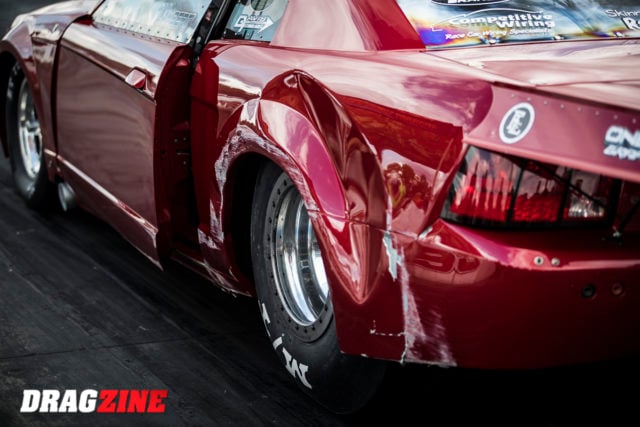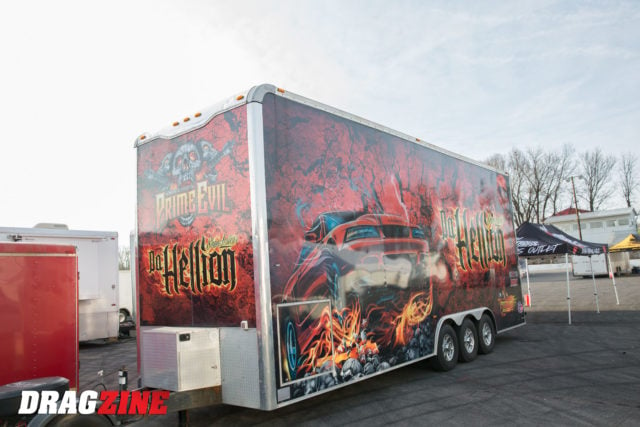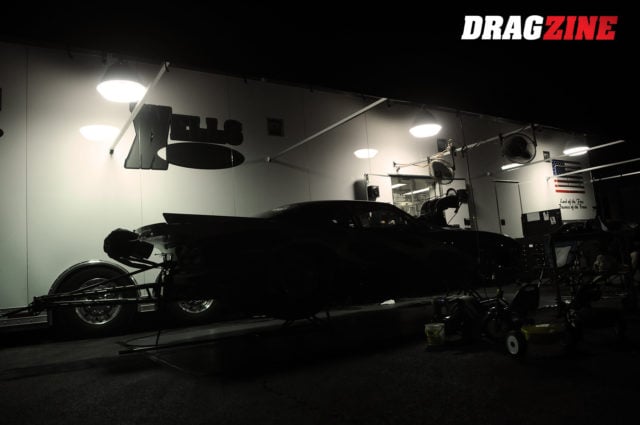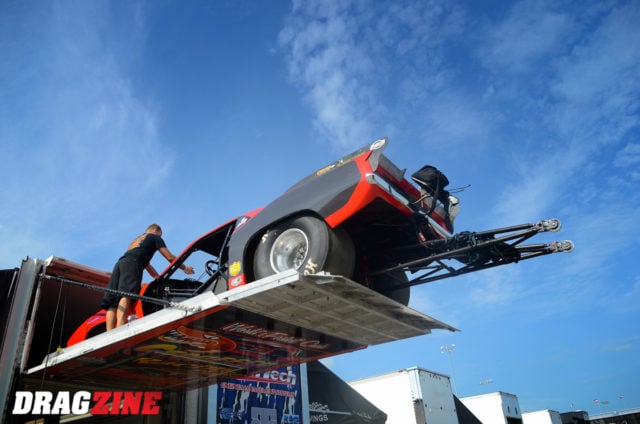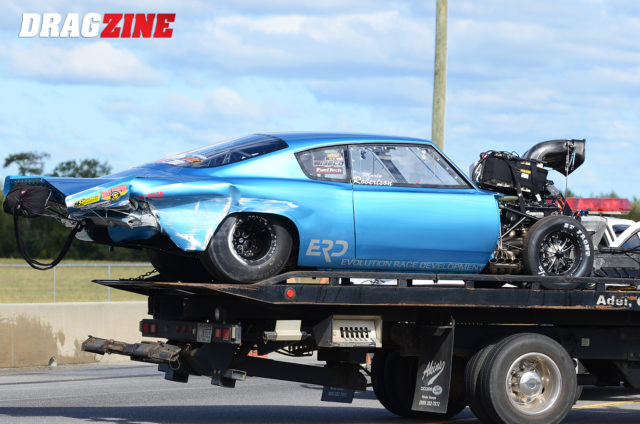There’s an old saying that goes, “only race what you can afford to replace.”
Racers and gearheads alike pour not only their hearts and souls but also a considerable portion of their financial worth into their operations, and it goes without saying that many, if not the vast majority, would be hard-pressed to recover in the event of a costly accident in any near-term timeframe, if at all. Indeed, there is equity in our race cars, our engines and parts, tools and trailers, and as we’ve seen time and again, it can all be gone in an instant. This can be not only a devastating blow to one’s racing, but to their family’s financial well-being, as well.
Did you know that, even in your driveway or your shop, your racecar is not covered under your homeowner’s policy? How about your spare engines and parts? Do you know what’s covered and what isn’t under the insurance policy on your trailer when at the track or in transit?
Unless you’ve done your homework, your investment is likely more at-risk than you think it is —nevermind crashing the car, but the events that are out of your control: trailer and garage fires, weather damage, theft, highway accidents, and so on.
And that’s where racing insurance — a longstanding option in the insurance marketplace that’s gained traction in recent years but remains somewhat of a cottage industry — proves its worth.
Pro Modified and 10.5-inch tire racer Bill Lutz, who owns Central Ohio Insurance Services in Pickerington, Ohio, along with Mike Larson and his Chizmark Larson Insurance agency in Joliet, Illinois, are two of just a small handful of such insurers offering policies on racecars and racing operations, with underwriting offered exclusively by Lloyd’s of London, a partially mutualized insurance marketplace in the UK.
Lutz, whose business presently insures more than 2,500 drag racers nationwide, believes this is something that racing needs, and despite the cost, is invaluable to anyone who wants to protect their investment.
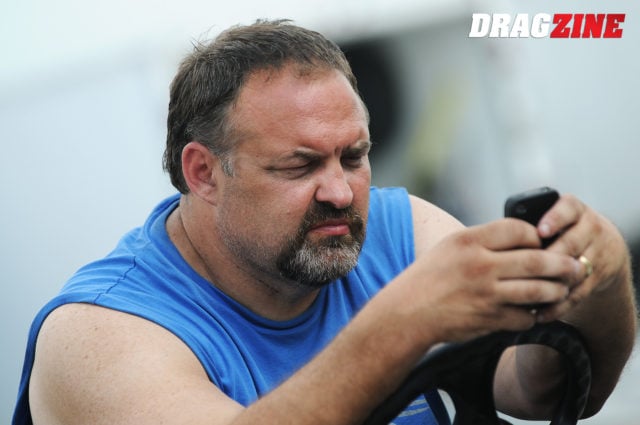
Longtime Radial versus The World and Pro Modified competitor Bill Lutz owns Central Ohio Insurance Services. As a racer himself who understands the costs associated with racing (and crashing), he’s one of the business’ most hands-on agents.
“This is a service that’s always been needed and hasn’t always been available, and myself, like most racers, everything we have is invested in our cars, so if we crash them, the majority of the people can’t afford to fix them them and be back out in 30 or 45 days. I’ve watched people sit out for years just because they didn’t have the money set back to fix the car — they’d already spent it all,” Lutz says.
“I still believe that everyone should have it, but not everyone does, unfortunately,” he adds.
Larson adds, “A lot of my clients, I ask ‘how much do you think you have in your racing operation? It doesn’t take long to get over a couple hundred thousand dollars….you would be surprised. And you have none of that insured. Your home might be worth $200,000, and you have that insured right?’ ‘Well, absolutely’, they tell me. But there’s more risk to their racing equipment than their house, because the house stays put, but they load up their trailer with parts and equipment and they leave with it, and it’s easily open to an accident or theft. So it’s just a no-brainer to have coverage.”
A lot of my clients, I ask ‘how much do you think you have in your racing operation? It doesn’t take long to get over a couple hundred thousand dollars….you would be surprised. – Mike Larson
If you own a street and strip car that’s insured under a traditional automotive policy for the road, as soon as you enter it in competition, your coverage is null and void. You can try to sneak a fast one on your insurance provider regarding the scenario that led to the damage should you have an accident, but we wouldn’t recommend it, and they’ll probably catch you anyway.
“This is probably the biggest misconception out there,” Lutz says. “I’ve had people literally argue with me, and I tell them, ‘whatever agent is telling you this, have them send you an e-mail that says your racecar is covered, and if they’re willing to do that, then that’s on their errors and omissions. But people believe that because their trailer is covered, that anything they put in it is covered — that’s another huge, huge misconception. Another is that you’re covered when you drop your car off at XYZ chassis shop; I can tell you too that 95 percent of the chassis shops out there don’t have insurance themselves.”
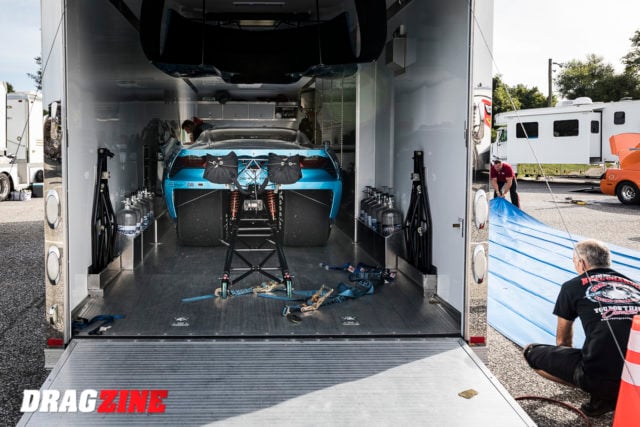
Confident your racecar and the other contents of your trailer are insured under your trailer policy? Think again.
Next, your trailer.
Trailers of higher dollar value — your stackers, your 52-foot goosenecks and similar — will often be insured as a standalone policy through your automotive insurance provider (your trailer has a VIN number, just like a vehicle) — the State Farms and the Allstates of the world. This covers the physical trailer itself, with policies varying on whether it has to be connected to your tow vehicle or not or in your driveway or in transit, to be covered from damage or theft. However, as Lutz and Larson point out, large, valuable trailers fall into a gray area in most insurance policies that racers may not be aware of, and they again assume some risk should their agent find issue with it.
“This is where it gets sketchy again; most auto insurance companies think they’re insuring a small enclosed trailer, a 20-footer you’re hauling your Harleys in or a small camper trailer,” Lutz explains. “But when they see what we’re hauling, if they knew what they were insuring, 90 percent of them probably wouldn’t insure it. Most companies have no idea what they’re insuring.”
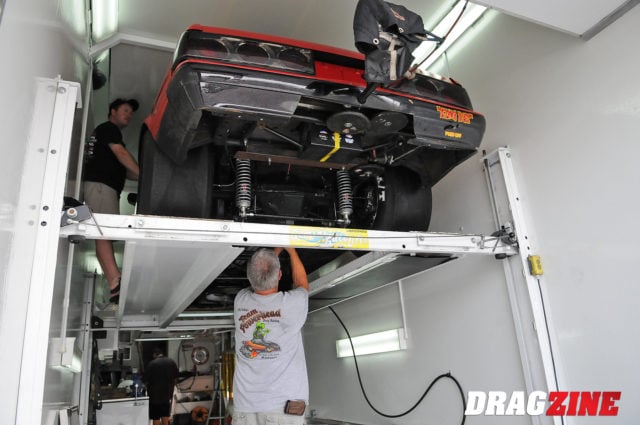
Most traditional insurers who issue policies for trailers so do under the pretense that they are a more “economical” type of trailer. Of course, few drag racers have such rigs, leading to the possibility of claims being denied once the agent learns what they actually insured.
Lastly: your spare parts, engines and tools. This is another gray area, as Lutz confirms.
“Technically, because we’re working on racecars, they’re not covered. Now you can lie to an insurance company and say you’re using them for private use, but not too many people have 30 and 40 thousand dollars in tools lying around for private use. And, because most racers are taking the tools and spares off premises and onto the road with them, there may be liability limits there where they may not cover that much dollar value of tools at a racetrack,” Lutz shares. “You have on-premises and off-premises coverages, and those numbers change as things leave your house.”
How about your primary or backup engines sitting on a stand in your garage damaged in a fire? Zero coverage. The same goes for said engine being transported in your trailer.
“I have guys that have over a million dollars in cars and engines and parts insured with me, and we don’t have any issues writing any of that stuff. It’s all just so simple to do it on a deal like we do, because we write the car, the trailer, the contents. And it’s literally pennies on the dollar. A trailer and the parts that are in it, if you have $100,000 worth of contents and trailer value, you’re only talking maybe $1,500 a year to insure it.”
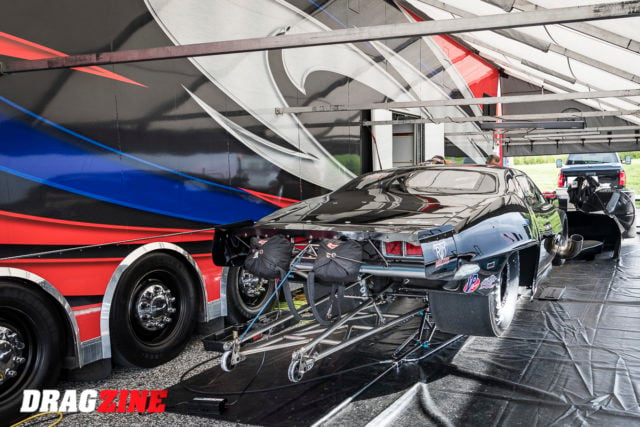
It doesn’t take long for a racing operation — car, trailer, spare engines and parts, and shop equipment — to creep into the hundreds of thousands and even the millions. On- and off-track insurance polices can protect it all, whether you’re on the track, the highway, or in your garage.
How It Works
Racing insurance remains a small industry because, as you might imagine, there’s a high risk-low reward for the underwriter. As such, the insurance comes at a premium cost — relative to your standard auto insurance — to the customer.
If you can name it, I’ve seen it. We’ve run across some crazy, crazy stuff that’s happened, and half the time I’m just like, ‘are you kidding me’? But we still pay for it. – Bill Lutz
While the coverage premium is certainly more pricey than a traditional auto policy, many feel it’s a small price to pay in the long run for the peace of mind of protecting what may very well be your most valuable personal asset aside from your home.
Through COIS and Lloyd’s of London, there is a minimum premium and minimum $30,000 dollar valuation. If your vehicle is only worth $10,000, it’s still covered for thirty.
Policies come with a straight deductible of 10 percent of the total insured value, while the premium varies dependent on two factors: the agreed value and the E.T. range of the car. Lutz used a typical Super Gas car as an example, citing the premium on those will generally be in the 2.25 percent range. Quicker, more valuable cars — Pro Mods and Radial vs The World cars, of which COIS insures several — will come at a higher premium, because there’s higher risk.
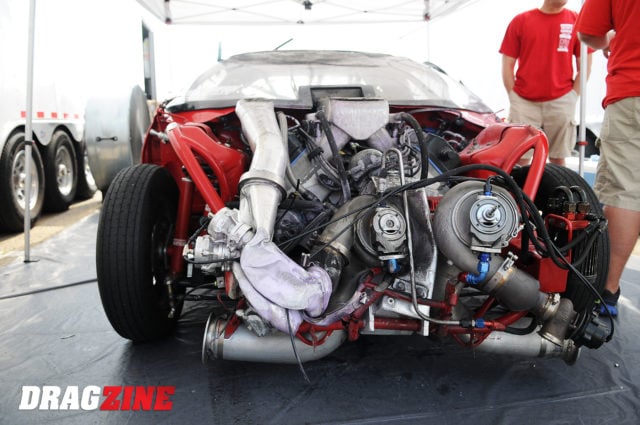
A caveat to insurance claims via Lloyd’s of London is that any damage to the engine covered by the policy has to come as a result of an impact. In other words, a nitrous fire on the starting line or the wick being a few feet too short at the stripe and kicking the rods out don’t fall under the policy. Some stupidity is covered, but not all stupidity.
COIS and Chizmark Larson can also write limited-use policies, as Lutz cited an example of a customer who only races twice a year and chose to insure his operation for those two events rather than for 12 months at a time as is standard. “That’s what’s great about Lloyd’s of London, if you can give them a scenario, they’ll work out a rate for you.”
“When it comes to racing insurance, everything is kind of a-la-carte…they don’t bundle everything, and it’s all separate,” Larson says. “And that’s why a racer really should go through a motorsports-focused agent.”
Regardless of who you insure your vehicle and operation through, there are caveats, however. Lloyd’s of London does not insure engine or drivetrain damage unless it is a direct result of an accident. They also do not cover fire damage that is not caused by collision. To put it simply, common engine damage resulting from parts failure, a bad tune, or just stupidity aren’t covered — Lutz commenting, “I tell people if I could get that covered, I’d be a multi-millionaire…and I certainly would have had it for all my engine blow-ups over the years.”
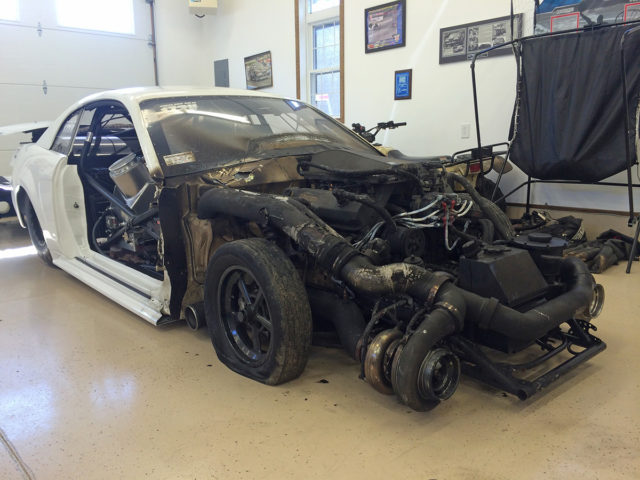
Outlaw 10.5 racer Ray “Hollywood” Johnson had his Ford Mustang insured with Lutz when an O-ring failed and caused this destructive fire. Changes to the policies in the years since have excluded fire without impact, however, the policy paid dividends at the time for Johnson, who was able to rebuild the car in the months following.
Under the a-la-carte structure, some racers will insure just the rolling chassis but not the engine, or other mixing and matching of policy choices; Lutz nothing that one premier Radial vs The World team forgoes on-track engine insurance, confident that an accident won’t junk the engine. “There’s some truth to that — out of thousands of wrecks, I’ve only had two that literally junked everything,” he says.
“But if you can name it, I’ve seen it. We’ve run across some crazy, crazy stuff that’s happened, and half the time I’m just like, ‘are you kidding me’? But we still pay for it,” Lutz adds.
We probably insure the lower-end racers 4-to-1 over the high-end racers, but that’s because their premiums are lower, whereas the higher-end racers, there premiums are tremendously high. – Bill Lutz
If you choose to take out an off-track policy only — protecting your car and equipment everywhere but on the track itself — the deductibles will range from $1,000 to $2,500, depending on value.
“Most customers want the on-track coverage. We’re probably 70 percent on-track,” Lutz shares. He adds that the more well-to-do racers who have the expensive machinery and the means to insure them make up a larger dollar-value portion of his book, but in all, it’s sportsman racers who make up the larger portion of the overall client base.
“We probably insure the lower-end racers 4-to-1 over the high-end racers, but that’s because their premiums are lower, whereas the higher-end racers, their premiums are tremendously high,” Lutz says.
Larson notes that off-track coverage will tend to be two to three times less expensive than on-track, leading many racers to forgo the on-track coverage but have the peace of mind that their operation is insured away from the track and during travel. For that reason, more of his customers have off-track policies than on. While Lloyd’s of London is the only underwriter for on-track coverage, off-track insurance on property and liability can be acquired through what Larson notes is “maybe 20 or more” underwriters, thus allowing the agent and the client to “shop around” for more affordable premium options.
After an accident, the insurance company will request an estimate from the client or a chassis shop to begin the process, just like an automative insurance claim. Racing insurers will not dictate where their client can takes the car — if it’s a Jerry Bickel or a Rick Jones chassis, for example, they aren’t forced to take it to XYZ local chassis shop to curb the repair cost — but what Larson and Lutz and others do do is limit and control the costs of the labor and the replacement parts. COIS pays up to $70 per hour for labor, and will also insure paint jobs for up to 10 percent of the insured value of the car.
In addition to coverage on one’s racing operation, Chizmark Larson and other agencies also extend policies to cover liabilities and personal medical coverage and disability, noting that many health insurance companies — Larson notes about half of all insurers in the country — can and will deny claims for injuries sustained in a racing accident, putting the racer at risk for life-changing medical costs. On the liability side of the coin, he says this is particularly valuable for racers who own a business and display that on the side of the car, or who have sponsors on the car, which are wide-open to liability cases should a spectator be injured by flying parts or debris, hit by your golf cart or tow vehicle, or any other of a multitude of potential scenarios that can play out at a drag racing venue.
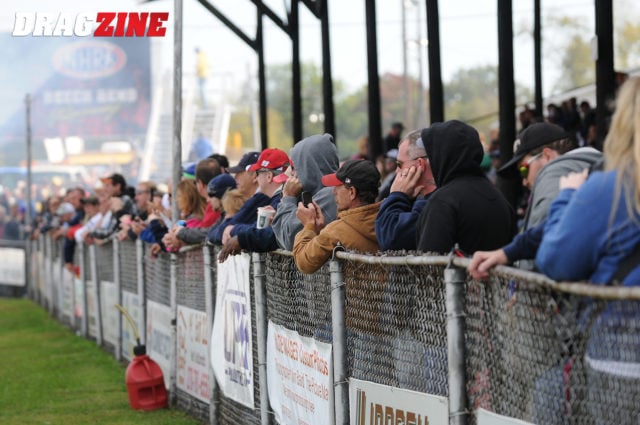
Racers may not be aware of it, but they can also find themselves in injury liability scenarios in the event that a spectator or other person is injured in an accident. This is of particular importance — and value — to business owners sponsoring their own vehicle, or to corporate sponsors of professional race teams.
“If your golf cart or ATV is out buzzing through the pits and a kid runs out in front of them, they can sue everybody — the team, the driver, the sponsors on the car, everyone,” Larson shares. “A lot of these racers put themselves in double jeopardy, because not only can they be sued, but someone can go after their personal business, as well.”
If your golf cart or ATV is out buzzing through the pits and a kid runs out in front of them, they can sue everybody — the team, the driver, the sponsors on the car, everyone. – Mike Larson
Larson notes that personal medical can be expensive, depending on how much coverage you want and, just like the insurance on the car, varies by the speeds and elapsed time you’re running. Temporary total disability and on-track medical, as an example, could run in the $1,200-1,500 a year range on a policy with smaller limits.
Because most racing insurance policies no longer include other-lane coverage — damage you cause to your opponent in an accident — the idea of enforcing a mandate wherein all cars would have to be ensured, like on the highway, has been discussed but never seriously considered.
“I’ve had talks with sanctioning bodies about that, and they just don’t believe they can mandate it and police it properly. Do I believe everyone should have it? Absolutely. Everybody should have it,” Lutz says.
That being said, for those who do have insurance on their operation, it proves to be an invaluable investment — an annual cost that they deem a virtual necessity when you have you six or even seven figures worth of property to protect.
Just days prior to our conversation with Lutz, small tire standout Rich Bruder was involved in a high-speed accident in Maryland. “Rich is a great driver and has been down the track thousands of times, but he pulled the chutes and next thing he knew it was in the wall…that’s all she wrote,” said Lutz. Fortunately, car owner Manny Buginga has insurance through COIS on the Mustang and it’s already in the process of being repaired. Sportsman drag racing standout Marco Abruzzi had an incident of his own at the Shakedown at the Summit in Norwalk in September when his car got away from him and struck the wall, sending him into the claim process for the first time.
With the cost of the car versus the cost of the insurance, I see the insurance as cheap, and I’d never race one of these things today without the insurance. – Marco Abruzzi
Abruzzi described the process as “painless,” sharing that, “I called the next day and Bill’s son, Kenny, answered the phone and said ‘we’ve been waiting for you to call.’ He told me exactly what to do step by step, and it was effortless. They asked me to get an estimate or two. I had several races coming up and so I didn’t do anything with the car for a couple of weeks, but once I had time I took a bunch of photos and videos and sent it to a couple of chassis builders and they drew up an estimate. [COIS] asked if they could send an adjuster to my house to look at it, the adjuster came and then called me with the settlement and it was more than fair and that was it. I’m very happy with it all.”
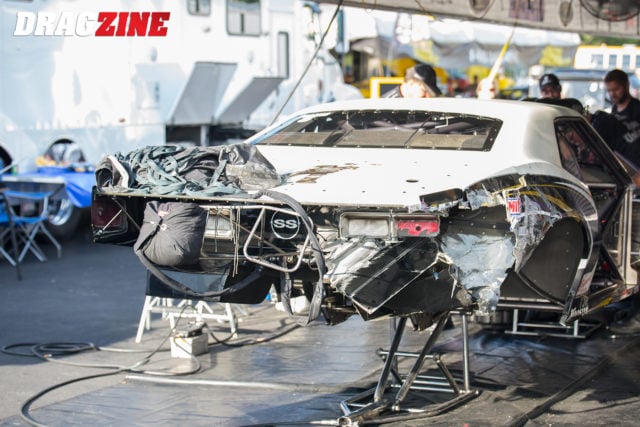
Larson and Lutz both note that Pro Modified racers are among their more common elite-level clients — the cars aren’t cheap and the chance of an accident remains disproportionately high.
Lutz insists that luck and irony seem to play into his conversations with prospective clients.
“It’s funny, but it’s not funny at the same time: If you take my paperwork and you don’t fill it out, I can 100 percent guarantee you you’re having a wreck,” he says with a laugh. He cited one example of a fast doorslammer racer who completed the paperwork for his policy but was unable to get the initial payment in to bind the contract before destroying his new car in a high-speed crash that very weekend. Others racers have cancelled their policies over very minute year-to-year premium increases, only to crash the car shortly thereafter and shoulder the entire cost of the repair. “There have been hundreds of examples like that; it’s just absolutely crazy when someone has our application and just doesn’t turn it in. It’s like a magnet. And I tell people, ‘when you take this application, you better fill it out and get it in, because the odds have gone through the roof now that you’re going to have an accident.’ ”
There are a couple areas of racing that are growing, really doing well, and drag racing is one of them. – Mike Larson
“There are a couple areas of racing that are growing, really doing well, and drag racing is one of them,” he says.
Larson continues, “the racing insurance industry goes back to the 1960s…it’s a developed, mature market. Obviously in 2008 everyone took a hit, but since that time it’s recovered nicely and it’s growing. I’ve seen companies that I’ve dealt with who are adding staff to handle the demand. On-track physical damage is always a niche deal, but off-track and storage and insurance on the rigs and the buildings and equipment, that’s just been growing and growing.”
Is the insurance worth it? Only you can decide if the many risks involved in racing, transporting, and even storing your race car and equipment are worth one more bill in the mail. Fortunately, if you don’t, the option exists and agents like Bill Lutz and Mike Larson make the process as painless as can be during what can be a quite painful time, in a variety of ways.

